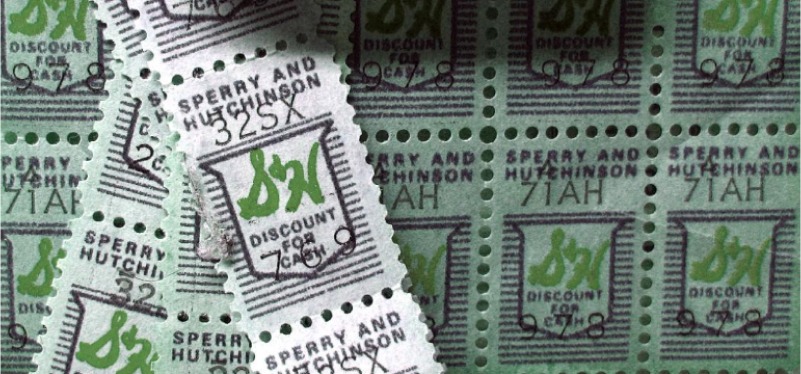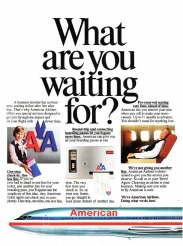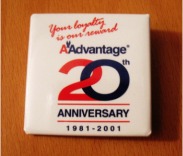The Rewards Landscape: History of Loyalty Programs and Where We Stand Now
Loyalty programs have been a cornerstone of customer engagement strategies for over a century. The earliest example dates back to the late 18th century when American retailers distributed copper tokens for future purchases. This rudimentary form of loyalty reward was designed to encourage repeat business and foster customer loyalty—a concept that remains central to loyalty programs today.

The real transformation in loyalty programs, however, began in the 20th century with the introduction of trading stamps. Sperry & Hutchinson’s Green Stamps, launched in the 1930s, became immensely popular. Customers would collect stamps from purchases and redeem them for products from a catalog. This model not only incentivized repeat purchases but also created a tangible connection between customer spending and rewards.

The Evolution: From Stamps to Points

The 1980s marked a significant shift with the advent of airline frequent flyer programs. American Airlines’ AAdvantage program, launched in 1981, was groundbreaking.
It introduced the concept of earning points based on miles traveled, which could be redeemed for free flights, upgrades, and other perks. This points-based system quickly became the blueprint for many other industries.

Retailers and credit card companies soon adopted similar models, offering points for purchases that could be redeemed for various rewards. The flexibility and appeal of these programs lay in their simplicity and the direct correlation between spending and rewards. Brands like Starbucks and Sephora leveraged this model to build highly successful loyalty programs that significantly boosted customer retention and engagement.
The Digital Age: Technology Transforms Loyalty
With the rise of digital technology, loyalty programs entered a new era. As consumers move to digital platforms across many industries, businesses started to amass more and more data. Restaurants — historically data poor — now had access to a wealth of data, opening the door for more personalized and data driven marketing.
In addition to the wealth of data created through consumers’ increasing preference for ecommerce, mobile apps and digital wallets have become integral to the modern consumer experience. Loyalty apps integrated into ordering experiences now offer consumers a seamless interface for loyalty and ordering. Starbucks, for example, has seen tremendous success with its mobile app, which integrates payment, ordering, and rewards. Launched three years before Apple Pay, the Starbucks app quickly became the largest mobile payment program in the U.S., amassing over 26 million transactions in its first year.
Current Loyalty Landscape: Dominated by One-Size-Fits-All Programs
Today’s loyalty landscape is crowded, with nearly every brand offering some form of loyalty program. Most of these programs are basic discount models that train customers to wait for coupons rather than changing their behavior. This one-size-fits-all approach leads to underperforming loyalty programs that fail to stand out.
The most advanced programs, like those from Chipotle and Taco Bell, are beginning to offer differentiated rewards but primarily through their apps. For instance, Chipotle’s Guac Mode was a smart, limited-time sign-up offer that drove enrollment but was short-lived because it was too generous to sustain ongoing. Imagine how effective it would be if such perks were reserved for the top 1% VIPs, creating a feeling of exclusivity for top customers and driving true motivation to increase spending.
Advanced loyalty programs in other industries, such as airlines and hotels, offer unique perks that drive genuine loyalty. Examples include free Wi-Fi at Marriott and early access to sales at Athleta. These benefits provide significant value to customers, fostering deeper emotional connections and loyalty.
Now restaurants can offer similar status, exclusivity, and experiential rewards with Thanx. The Thanx platform allows restaurants to create differentiated loyalty programs that go beyond traditional discount based models. What’s more, these programs can be regularly updated to respond to changing customer needs and preferences. In fact, the average Thanx restaurant changes their loyalty program nine times a year!
The Future: Data-Driven and Personalized Loyalty
As we look to the future, the role of data in shaping loyalty programs will continue to grow, particularly in the realm of non-discount rewards. Advanced analytics and artificial intelligence will enable even more precise personalization, predicting customer needs and preferences with greater accuracy. This data-driven approach will allow brands to create hyper-targeted rewards and offers, further enhancing customer loyalty and lifetime value.
Companies like OfferFit and Dynamic Yield are pioneering AI-driven personalization, setting the stage for hyper-targeted rewards and offers. For example, OfferFit helped a leading Latin American telecommunications company drive renewals and upgrades by empirically discovering the best message, timing, discount, and plan for each customer, resulting in a 120% increase in incremental ARPU impact.
Similarly, Dynamic Yield’s personalization engine for quick-service restaurants predicts the next-best products, menu items, and offers based on factors like location, time of day, and real-time product availability, driving higher order values and loyalty.
In addition, restaurant technology companies are adding AI products to their offerings. Olo recently introduced Smart Cross-Sell, an innovative feature designed to provide dynamic and personalized order suggestions. By leveraging AI, Smart Cross-Sells offer intelligent recommendations based on factors such as order history, location, time of day, and current cart contents. During initial tests, this new feature boosted basket values by an average of 10% compared to static cross-sells.
Future loyalty programs will also move beyond app exclusivity. Non-discount rewards will become more sophisticated, incorporating elements like exclusive access, personalized experiences, and unique merchandise. These rewards will resonate deeply with customers and can be targeted to specific segments of high-value customers, rather than the entire app audience.
Loyalty programs will also adopt advanced tiering models, including exclusive swag and secret menus. These elements create a sense of exclusivity and excitement, rewarding top-tier members with unique experiences and merchandise.
In summary, loyalty programs are evolving from basic discount systems to sophisticated, data-driven platforms offering a variety of engaging rewards. As technology advances, the future of loyalty programs will be defined by personalized, non-discount rewards that foster deeper customer engagement and stronger brand loyalty.
Types of Non-Discount Loyalty (Featuring Real Campaign Examples)
Non-discount loyalty rewards have emerged as a powerful tool to foster deeper connections and enhance customer experiences. From secret menus and early access to exclusive events and unique merchandise, these examples illustrate how restaurants can create memorable and valued experiences without relying on traditional discounts.
Secret & Hidden Menus
Secret and hidden menus — sometimes playfully referred to as the ‘speakeasies’ of loyalty programs — create an air of exclusivity and excitement that drives customer interest and loyalty. These limited-access menu items can be advertised broadly (and often make for a great PR story), but are only available to loyalty members meeting criteria specified by the restaurant, making them feel special and sought-after — especially for demographic groups that value exclusively.
In a June 2024 study by Datassential, 36% of Gen Z consumers have purchased or tried to purchase a special edition, limited-time product from a food brand. It’s also important to note that 54% of consumers are interested in access to special menu items as part of a limited-service restaurant loyalty program.
Velvet Taco
Velvet Taco, a Dallas-based fast-casual restaurant, collaborated with Thanx to create a unique loyalty experience through their Backdoor Secret Menu. Launched in July 2022, this secret menu includes items like the Nashville Hot Chicken and the Hangover Burger, available exclusively through The Velvet Room loyalty app.

Bubbakoo’s Burritos
Over 12,000 Bubbakoo’s Burritos loyalty members have gained access to the loyalty tier that allows them to order from the elusive “Backstage Menu.” Available only through the loyalty app, the secret menu includes special items, engages guests, and incentivizes them to order directly through the app rather than using third-party services.
In addition to the secret menu, when Bubbakoo’s Burritos launched their new loyalty program, they hosted a scavenger hunt called Surfin’ for Burritos on the app. Participants discovered specific facts and shared them on social media, with 15 winners receiving a grand prize.

Early Access
Early access rewards are a powerful way to make VIPs and loyal customers feel valued and special by giving them the first opportunity to try new and limited-time offers. This approach not only strengthens the bond between the brand and its most dedicated customers but also serves as a strategic soft launch to gather feedback and generate early buzz.
Hopdoddy Burger Bar
When crafting the loyalty program, Hopdoddy opted for a tiered benefits system designed to reward and delight their regulars. The program offers escalating rewards and exclusive perks to customers based on their level of interaction and spending. The tiers branding amplifies its brand’s unique rock and roll roots, with levels including the Headliner (the Sometimer) and Rockstar (The Regular). Their highest tier, Legend, receives exciting non-discount perks such as early access to Hopdoddy’s burger of the month and secret menu items.
Taco Bell’s Mexican Pizza
In May 2022, Taco Bell reintroduced the Mexican Pizza, a fan favorite. Loyalty program members enjoyed early access from May 17-18 through the Taco Bell app, boosting app engagement. This approach not only rewarded loyal customers but also generated significant buzz and anticipation for the full menu release. This strategy showcased how early access and exclusive promotions effectively drive customer engagement and loyalty.

Exclusive Events
Exclusive events such as tasting dinners, meet-and-greets, and happy hours provide unique and memorable experiences that enhance customer loyalty. These events create a sense of belonging and appreciation among top-tier members, making them feel valued and connected to the brand.
PINCHO’s Annual Burger Competition
This exclusive event invites loyalty members to submit their own burger recipes, with the winning entry being featured on PINCHO’s menu. The event not only drives customer excitement and brand loyalty but also allows PINCHO to showcase its commitment to community involvement and culinary creativity.
Subway: Trip to Utqiagvik, Alaska
Subway’s 2023 initiative to challenge its most loyal MVP Rewards members to journey to Utqiaġvik, Alaska, for a chance to earn one million rewards points is a prime example of how exclusive events can enhance customer loyalty. This thrilling adventure not only offers participants a unique and unforgettable experience but also solidifies their connection to the brand. By combining the allure of travel with significant rewards, Subway fosters a sense of belonging and appreciation among its top-tier members. Such initiatives make members feel valued and motivated to continue their loyalty journey with Subway, while also creating memorable stories that resonate with the brand’s community.
Merchandise and Swag
Merchandise and swag offer unique and branded items that go beyond the usual to captivate customer interest. These exclusive items often create a sense of belonging and pride among loyalty members, enhancing their connection to the brand.
Equator Coffee
Loyal Equator Coffee customers can redeem points for a variety of high-quality items, including a free coffee brewer, a stylish mug, a donation cup supporting charitable causes, and a cozy sweatshirt.
![]()
Dish Society
Loyalty members at Dish Society can trade points in for a special pint glass, coffee mug, bag of coffee, and more!
![]()
Special Passes
Special passes provide perks like “skip the line,” preferred seating, and members-only parking, offering a first-class experience to loyalty members. These benefits enhance the customer experience by making members feel valued and privileged.
Vine Hospitality: Free Corkage
At Vine Hospitality restaurants, they’ve brilliantly integrated a non-discount reward into their loyalty program with their corkage reward. This perk allows members to enjoy free corkage, elevating their dining experience without diminishing the brand’s value. Priced at just 75 points – a bargain considering their average check is $78 – loyalty members can essentially enjoy free corkage after every purchase if they choose.
Tucanos: Free Upgraded Seating
Tucanos offers Gold Tier loyalty members priority seating, allowing them to bypass the wait and get seated ahead of others. This exclusive benefit enhances the dining experience, making members feel special and valued whenever they visit.

Mega-Rewards and Ultimate Experiences
Mega rewards and ultimate experiences are high-value prizes and over-the-top rewards that generate buzz and appreciation for top-tier guests. These incentives not only enhance customer engagement but also create memorable experiences that foster loyalty and brand affinity.
Big Chicken Rewards: Earn Bok Bucks for Carnival Cruises
Big Chicken’s loyalty program allows members to redeem Bok Bucks for a variety of exclusive offers, including two free tickets to a Carnival cruise. This program is a prime example of non-discount loyalty that offers unforgettable experiences.
Velvet Taco: Trip to HQ in Dallas, Texas
Velvet Taco used Thanx’s Hidden Menu feature to offer special dishes exclusively available to the highest tier loyalty members who order directly. With a single campaign, 13% of members progressed to a higher tier. The flexibility of Thanx’s rewards programs also allows Velvet Taco to give VIPs access to other fun perks such as exclusive merchandise and a chance to win a trip to Dallas to meet the executive chef. Learn more here.
Implementation Tips for Non-Discount Loyalty Rewards
1. Engage with Feedback
Make sure you’re actively collecting and acting on customer feedback. One effective tactic is to survey loyalty members to understand their preferences and desires. By asking customers directly what they want from the loyalty program, you can gather valuable insights and tailor your offers accordingly. Set up channels for easy feedback collection, such as surveys, in-app feedback options, or direct communication with staff.
2. Operational Readiness
Contrary to popular belief, non-discount loyalty rewards are not necessarily operationally intensive. Leverage existing menu hacks that regulars enjoy and offer them to VIPs online, avoiding the need for new limited-time offers. Similarly, use overstocked swag items by adding them to the points marketplace at a low value, making them exclusive to loyalty members.
For more complex rewards like exclusive events, ensure your team is well-prepared through thorough training and clear communication about the program specifics. Start with simpler integrations and gradually introduce more complex rewards to enhance your loyalty program without overwhelming operations.
3. Offer Clear Instructions
Make sure that special passes and rewards are easily accessible via the app, just like other rewards. This will make it simple for customers to find and redeem their benefits. Additionally, send email reminders about available rewards and benefits already earned to keep customers informed and engaged. By providing clear and positive communication, you can encourage continued participation and enjoyment of your loyalty program.
Conclusion
With nearly every restaurant offering a loyalty program, guests seek differentiated ways to engage with the brands they love. Loyalty programs are evolving from traditional discounts to innovative non-discount rewards, fostering deeper emotional connections and memorable experiences.
Personalized, data-driven strategies are essential for brands to stand out. Non-discount rewards like secret menus, exclusive events, and unique merchandise create meaningful connections with customers.
The future of loyalty programs will focus on continuous innovation and engagement, crafting extraordinary experiences that foster lasting loyalty. This journey to redefine customer loyalty promises significant growth and impact.
Need ideas? Download our Big Book of Non-Discount Rewards to see 40+ ideas to try.
Get it now